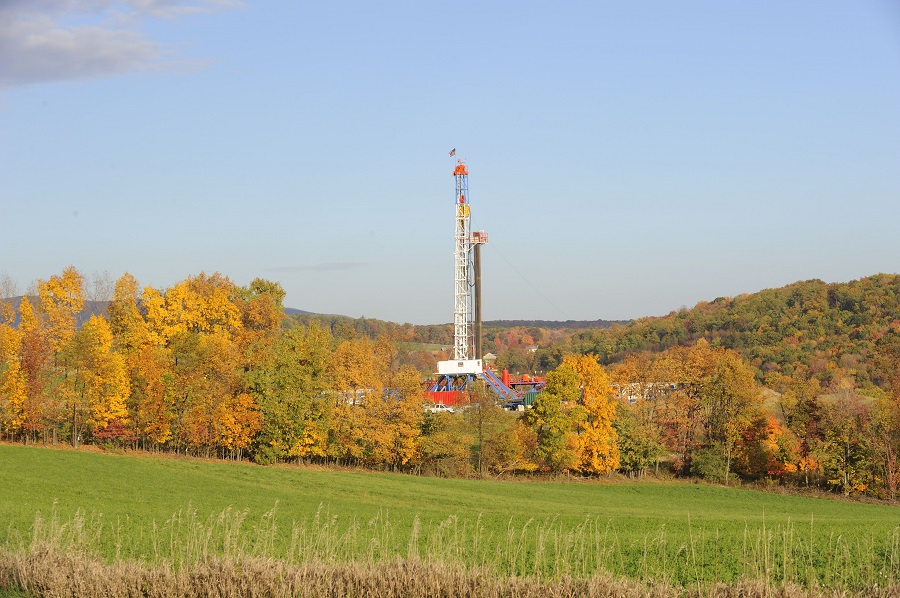 The U.S. deep freeze will wreak havoc on oil and gas production for several days if not weeks, according to industry experts, as companies deal with frozen equipment and a lack of power to run operations.
The U.S. deep freeze will wreak havoc on oil and gas production for several days if not weeks, according to industry experts, as companies deal with frozen equipment and a lack of power to run operations.
Texas produces more oil and natural gas than any other U.S. state, and its operators, unlike those in North Dakota or Alaska, are not accustomed to dealing with frigid temperatures. Numerous refineries in Texas have also been shut, though weather events rarely knock substantial amounts of production offline in oil patches far from the Gulf coast.
Roughly 500,000 to 1.2 million barrels per day of the state’s crude production has been shut-in by the weather, which hit Texas with the coldest temperatures in 30 years, analysts at Rystad Energy said. The ripple effect from the cold is likely to reduce output for several weeks.
Icy roads in the Permian Basin, the top U.S. shale field, halted the trucking of everything from sand supplies to cement, while a loss of power that affected millions of Texas residents also cut electricity to oil pumps and saltwater disposal facilities. In some instances, wellheads froze. Cellular service, used to send data from wellsites to headquarters, was lost.
“They haven’t had the electricity available to make the pumps work,” said Texas Railroad Commissioner Jim Wright, one of the state’s three elected industry regulators. “Some producers in West Texas had to shut in entire fields when they lost power.”
Chevron Corp said the widespread power loss had led to “a significant production shut-in of our Permian assets,” while Exxon Mobil said its shale operations in the region were operating at “reduced capacity.”
Power interruptions for Texland Petroleum, which has 1,200 wells in the Permian Basin, started on Monday morning, President Jim Wilkes said.
Some wells were disconnected by the power company or have had rotating outages. At others, oil haulers stopped picking up oil due to road conditions. “When the stock tanks fill up with oil, we have to shut in the wells,” Wilkes said.
Wilkes expects to restart production this weekend, but it will take a week to return to normal.
Two of Abraxas Petroleum Corp’s Permian oil wells were frozen in, but a “silver lining” was that the company’s natural gas wells continued producing, said Chief Executive Bob Watson.
“Time will tell when things get back to normal and how much well work will be required to get them back on,” he said.
Permian wells produce prolific amounts of water, so production streams can easily freeze in surface valves. That, along with the loss of electrical power, contributed to the loss in output, analysts at Wood Mackenzie said. Many wells rely on gas lift, and those lines freeze easily, too.
“There’s no recent precedent for this and it’s really due to the severity and the duration of the cold weather,” said Marc Amons, a Wood Mackenzie analyst.
Accessibility has been a major constraint, said Todd Staples, president of the Texas Oil & Gas Association.
“Hazardous travel conditions limit the accessibility to repair equipment, it limits the ability for service companies to reach production sites. You have unplanned communication and power outages that all create difficulties,” Staples said.
The cold weather spillover has affected producers in North Dakota’s Bakken shale field, which suffered temperatures as low as minus 50 degrees Fahrenheit (-46 C) earlier this month, said Ron Ness, president of the North Dakota Petroleum Council.
“I think we’ll see some fairly significant impacts” on production, said Ness, in part because of blackouts from electric supply sent south, he said. Oil production in the Bakken slipped to 1.19 million barrels per day in December, the latest month for which data is available.
More recently, well completions, which foreshadow future production, fell 40% in the first half of February as severe weather descended, Ness said.
The state’s oil production declined by 35,000 barrels per day in December over November, and will fall further in January and February, said Lynn Helms, North Dakota’s director of mineral resources.
“We could see double the production drop in January and see similar production drops in this cold weather,” said Helms. 29dk2902l